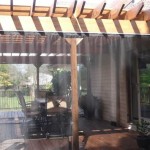How To Make A Small Paver Patio
Constructing a paver patio can significantly enhance outdoor living spaces, providing an aesthetically pleasing and functional area for relaxation, entertainment, and various outdoor activities. A small paver patio, in particular, offers a manageable and cost-effective option for homeowners seeking to improve their property without undertaking a large-scale construction project. The process, while involving physical labor, is achievable for many do-it-yourself enthusiasts with the proper planning, tools, and execution.
This article provides a comprehensive guide on how to construct a small paver patio, detailing each step from initial planning and preparation to the final installation and finishing touches. Adhering to these instructions and guidelines will contribute to a durable, visually appealing, and long-lasting patio that adds value and enjoyment to the home.
Planning and Preparation
The initial phase of any successful paver patio project involves meticulous planning and thorough preparation. This stage sets the foundation for the entire project and minimizes potential issues during the construction phase. Careful consideration of site selection, patio design, material selection, and drainage are crucial aspects to address before commencing any physical work.
Site Selection and Layout: Choosing the optimal location for the patio is paramount. Evaluate factors such as sunlight exposure, proximity to the house, existing landscaping, and intended usage. Consider the flow of traffic and accessibility from the house and other areas of the yard. Once the location is determined, accurately measure the area and sketch a preliminary layout of the patio. This layout should include the dimensions of the patio, the desired shape (square, rectangular, circular, or custom), and any existing features (trees, shrubs, or utilities) that need to be accommodated. Mark the perimeter of the patio area with stakes and string, ensuring the layout is accurate and visually appealing. A builder's square can be used to ensure right angles are perfectly square.
Patio Design and Material Selection: The design of the patio should complement the existing architecture and landscaping of the home. Consider the style of the house and choose paver materials that harmonize with the overall aesthetic. Pavers are available in a wide variety of shapes, sizes, colors, and textures, including concrete, brick, and natural stone. Concrete pavers are a popular choice due to their affordability, durability, and versatility. Brick pavers offer a classic, traditional look, while natural stone pavers provide a unique and organic feel. It is advisable to visit a local landscaping supply store to examine different paver options and obtain samples. Calculate the amount of pavers needed based on the patio area and the dimensions of the chosen pavers. Add an extra 5-10% to the total quantity to account for cuts, breakage, and potential future repairs. Also consider the edge restraint material needed to keep the pavers in place.
Material Calculation and Procurement: Accurate material estimation is crucial to avoid project delays and cost overruns. In addition to pavers, the project necessitates base materials, including gravel and sand. The gravel sub-base provides drainage and structural support for the patio, while the sand layer creates a level and stable surface for the pavers. Calculate the required amount of gravel and sand based on the depth of each layer needed. A general guideline is to use a 4-6 inch layer of gravel and a 1-inch layer of sand. Consult with a local landscaping supply store to determine the specific material requirements for the project based on the soil type and climate conditions. Purchase all necessary materials in advance to ensure they are readily available when needed.
Drainage Considerations: Proper drainage is essential to prevent water from pooling on the patio surface, which can lead to erosion, staining, and potential structural damage. Evaluate the existing drainage patterns in the area and ensure the patio is graded slightly away from the house to facilitate water runoff. If necessary, install a drainage system, such as a French drain or a surface drain, to effectively manage excess water. Consult with a landscaping professional to determine the most appropriate drainage solution for the specific site conditions.
Site Excavation and Base Preparation
Once the planning phase is complete, the next step involves site excavation and base preparation. This stage involves removing the existing vegetation and soil, creating a level base for the patio, and installing the gravel and sand layers. Proper execution of this phase is critical to ensure the stability and longevity of the paver patio.
Excavation: Using a shovel, remove the existing vegetation, topsoil, and any other debris from the patio area. Excavate to a depth that allows for the gravel base, sand setting bed, and the paver thickness, ensuring the finished patio surface will be level with the surrounding landscape or slightly above. The excavation depth should be approximately 8-10 inches, depending on the specific paver and base material thicknesses. Use a level to ensure the excavated area is consistently level throughout. Remove any large rocks, roots, or other obstructions that may interfere with the base preparation.
Compaction: After excavation, compact the exposed soil using a plate compactor. This will help to stabilize the soil and prevent settling, which can lead to unevenness in the patio surface. Compact the soil in multiple passes, overlapping each pass to ensure uniform compaction. Pay particular attention to the edges and corners of the excavated area. A properly compacted subgrade is crucial for preventing future issues with the patio's level and stability.
Gravel Base Installation: Spread the gravel evenly over the compacted soil, creating a 4-6 inch layer. Use a rake to distribute the gravel uniformly and ensure it is level throughout the patio area. Compact the gravel layer using a plate compactor in multiple overlapping passes. This will create a solid and stable base for the sand setting bed and the pavers. The type of gravel used should be a well-graded mixture that locks together when compacted.
Sand Setting Bed Installation: Spread a 1-inch layer of sand over the compacted gravel base. Use a screed board to create a smooth, level surface for the pavers. A screed board is a long, straight piece of wood that is dragged across the sand layer to level it. The sand should be damp but not saturated. Avoid walking on the prepared sand bed to prevent disturbing the level surface. The sand setting bed is what allows for minor adjustments in paver height during installation and provides a uniform bearing surface.
Paver Installation and Finishing
The final stage of the paver patio project involves installing the pavers, cutting them to fit the edges, and filling the joints with sand. This phase requires careful attention to detail to ensure the pavers are properly aligned, level, and securely interlocked. The finishing touches contribute to the overall aesthetic appeal and structural integrity of the patio.
Paver Placement: Begin laying the pavers along one edge of the patio, working systematically across the area. Place the pavers tightly together, ensuring they are properly aligned and level. Use a rubber mallet to gently tap each paver into place, ensuring it is firmly seated in the sand setting bed. Maintain consistent spacing between the pavers to create a uniform and aesthetically pleasing appearance. Use paver spacers if desired to maintain consistent joint widths.
Cutting Pavers: When the pavers reach the edges of the patio, it will likely be necessary to cut them to fit. A paver splitter or a circular saw with a diamond blade can be used to cut the pavers accurately. Measure the required cuts carefully and mark the pavers with a pencil or marker. Wear safety glasses and ear protection when cutting pavers. Ensure clean and precise cuts for a professional-looking finish. Uneven cuts can detract from the overall appearance of the patio.
Edge Restraint Installation: Install edge restraints around the perimeter of the patio to prevent the pavers from shifting and settling over time. Edge restraints can be made of plastic, metal, or concrete. Secure the edge restraints with stakes or nails, ensuring they are firmly anchored in the ground. The edge restraints should be flush with the top of the pavers. Flexible edge restraints are often easier to work with for curved patios.
Joint Sanding and Compaction: Once all the pavers are installed and the edge restraints are in place, fill the joints between the pavers with sand. Use a broom to sweep the sand into the joints, ensuring they are completely filled. Compact the pavers using a plate compactor with a protective mat to prevent scratching or damaging the pavers. The compaction process will help to settle the sand into the joints and lock the pavers together. Repeat the joint sanding and compaction process as needed to ensure the joints are completely filled and the pavers are securely interlocked.
Final Cleaning and Sealing (Optional): After the joints are filled and compacted, thoroughly clean the patio surface to remove any excess sand or debris. Use a garden hose with a spray nozzle to wash the patio, ensuring all the joints remain filled with sand. Once the patio is dry, consider applying a paver sealant to protect the pavers from stains, fading, and weathering. Paver sealants can enhance the color and appearance of the pavers and extend their lifespan. However, sealing is optional and depends on individual preferences and environmental conditions.

How To Build A Patio In Weekend Fine Gardening

Diy Paver Patio Backyard Project Old Salt Farm

How To Build A Patio That Will Last Lifetime Easton Outdoors
10 Small Paver Patio Ideas Aspire

How To Build A Paver Patio Rogue Engineer

How To Build A Small Paver Patio Diy For Around 200 Bucks

How To Build A Paver Patio Rogue Engineer

How To Build A Paver Patio Young House Love

Diy Paver Patio Backyard Project Old Salt Farm

Take The Fun Outside With A Paver Patio Seattle Times
Related Posts








